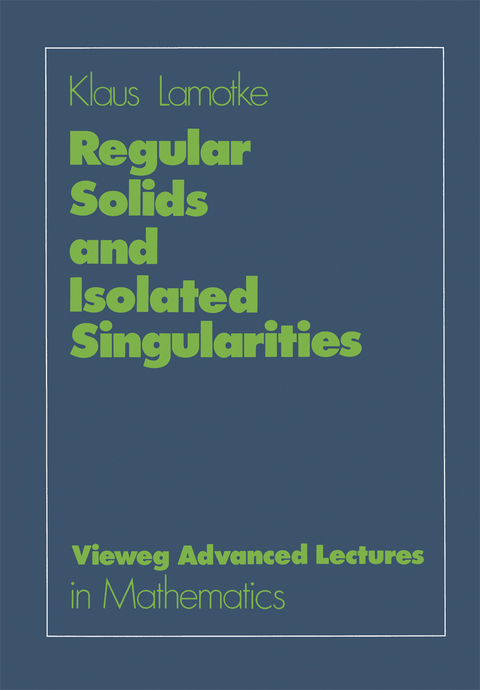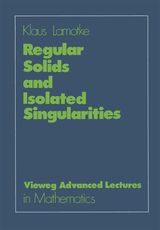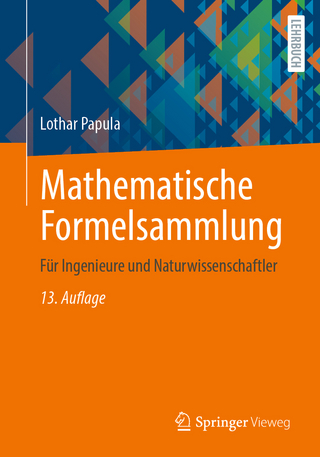Regular Solids and Isolated Singularities
I: Regular Solids and Finite Rotation Groups.-
1. The Platonic Solids.-
2. Convex Polytopes.-
3. Regular Solids.-
4. Enumeration and Realization of Regular Solids.-
5. The Rotation Groups of the Platonic Solids.-
6. Finite Subgroups of the Rotation Group SO(3).-
7. Normal Subgroups.-
8. Generators and Relations for the Finite Subgroups of SO(3).- II: Finite Subgroups of SL(2,G) and Invariant Polynomials.-
1. Finite Subgroups of SL(2,C).-
2. Quaternions and Rotations.-
3. Four-Dimensional Regular Solids.-
4. The Orbit Spaces S3/G of the Finite Subgroups G of SU(2).-
5. Generators and Relations for the Finite Subgroups of SL(2,C).-
6. Invariant Divisors and Semi-Invariant Forms.-
7. The Characters of the Invariant Divisors.-
8. Generators and Relations for the Algebra of Invariant Polynomials.-
9. The Affine Orbit Variety.- III: Local Theory of Several Complex Variables.-
1. Germs of Holomorphic Functions.-
2. Germs of Analytic Sets.-
3. Germs of Holomorphic Maps.-
4. The Embedding Dimension.-
5. The Preparation Theorem.-
6. Finite Maps.-
7. Finite and Strict Maps.-
8. The Nullstellensatz.-
9. The Dimension.-
10. Annihilators.-
11. Regular Sequences.-
12. Complete Intersections.-
13. Complex Spaces.- IV: Quotient Singularities and Their Resolutions.-
1. Germs of Invariant Holomorphic Functions.-
2. Complex Orbit Spaces.-
3. Quotient Singularities.-
4. Modifications. Line Bundles.-
5. Cyclic Quotient Singularities.-
6. The Resolution of Cyclic Quotient Singularities.-
7. The Cotangent Action.-
8. Line Bundles with Singularities.-
9. The Resolution of Non-Cyclic Quotient Singularities.-
10. Plumbed Surfaces.-
11. Intersection Numbers.-
12. The Homology of Plumbed Surfaces.-
13. TheFundamental Group of a Plumbed Surface Minus its Core.-
14. Groups Determined by a Weighted Tree.-
15. Topological Invariants.- V: The Hierarchy of Simple Singularities.-
1. Basic Concepts.-
2. The Milnor Number.-
3. Transformation Groups.-
4. Families of Germs.-
5. Finitely Determined Germs.-
6. Unfoldings.-
7. The Multiplicity.-
8. Weighted Homogeneous Polynomials.-
9. The Classification of Holomorphic Germs.-
10. Three Series of Holomorphic Germs.-
11. Simple Singularities.-
12. Adjacency.-
13. Conclusion and Outlook.- References.
| Erscheint lt. Verlag | 1.1.1986 |
|---|---|
| Reihe/Serie | Advanced Lectures in Mathematics |
| Zusatzinfo | 224 S. 17 Abb. |
| Verlagsort | Wiesbaden |
| Sprache | deutsch |
| Maße | 170 x 244 mm |
| Gewicht | 414 g |
| Themenwelt | Mathematik / Informatik ► Mathematik ► Angewandte Mathematik |
| Mathematik / Informatik ► Mathematik ► Geometrie / Topologie | |
| Schlagworte | Algebra • Endlichkeit • Funktion • Geometrie • Gleichung • Invariante • Lehrsatz • Topologie • Variable |
| ISBN-13 | 9783528089580 / 9783528089580 |
| Zustand | Neuware |
| Informationen gemäß Produktsicherheitsverordnung (GPSR) | |
| Haben Sie eine Frage zum Produkt? |
aus dem Bereich




